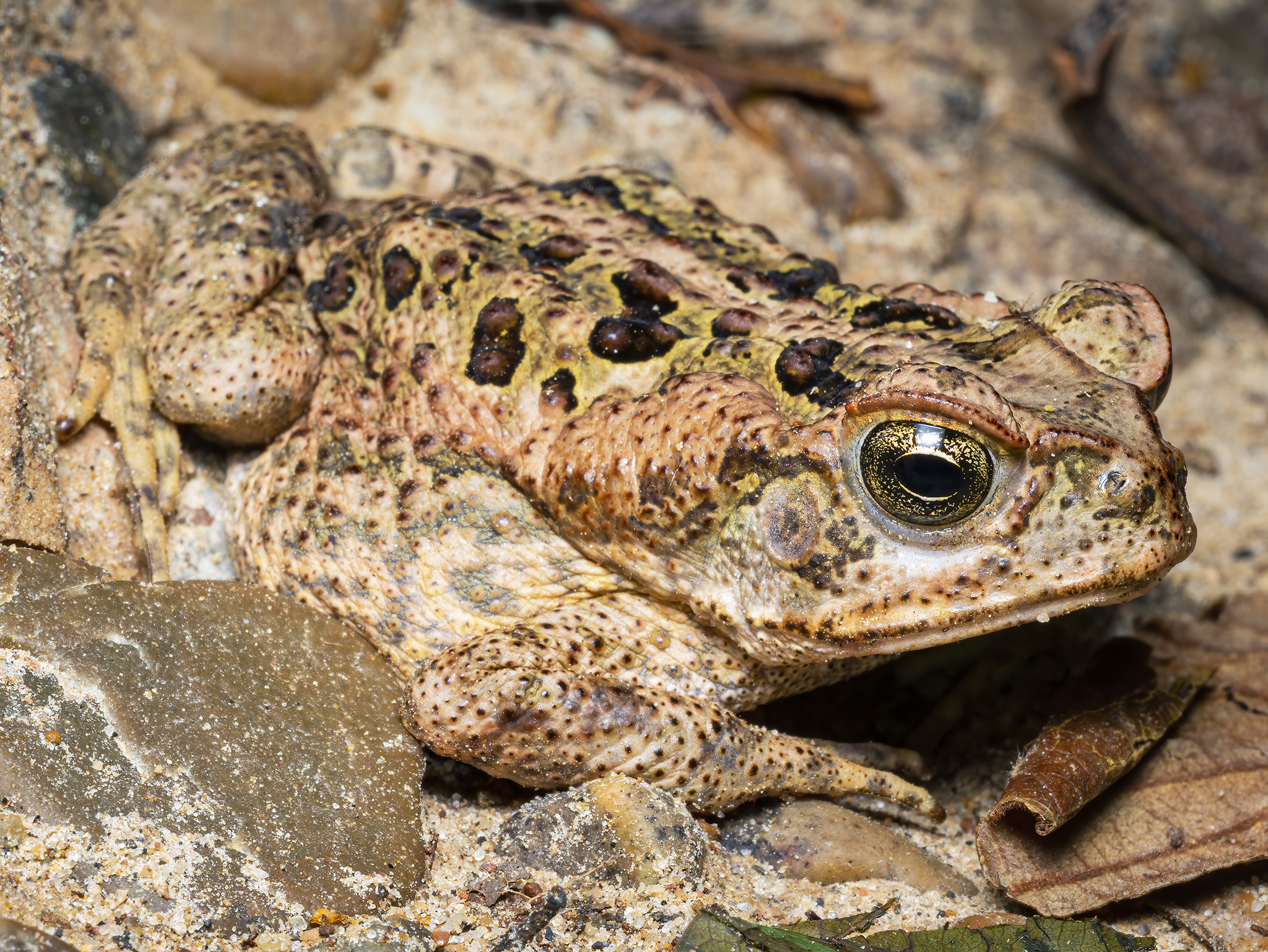Last week, while strolling along a dense trail late at night, the Peruvian jungle provided me with a particularly memorable experience. As I scanned the ground with my head-lamp, I spotted a familiar creature camouflaged in the leaf-litter. The warty, grumpy-looking face belonged to a Cane Toad – an animal I’d encountered thousands of times before while exploring Australia’s Top End.
But this one was special…
There have been nights in the Australian tropics where I’ve seen well over a hundred Cane Toads in a single evening. I distinctly remember being at Fogg Dam in the Northern Territory one afternoon, shortly after a cluster of toadlets had reached the age where they can leave the water. The ground was like popcorn. Every step you took resulted in dozens of the tiny toads hopping away from you in all directions.
In Australia, the presence of Cane Toads is a constant reminder of the mind-boggling level of destruction this one invasive species has caused, decimating a huge range of reptile populations. From just 102 toads released in Queensland in 1935, their numbers have reached 200 million in less than a century, and as of 2020, the Cane Toad front had reached Fitzroy Crossing in Western Australia, more than 2,000km from their original starting point – and they’re still expanding.
However, the Cane Toad in this photo is different. It’s not destructive, it’s not invasive. This Cane Toad is native, living happily in its natural environment, kept perfectly in balance by the surrounding Peruvian ecosystem. It was amazing to hear the guide I was walking with refer to it as beautiful – a word I’d never heard a conservationist use in relation to a Cane Toad. But if you look into that intricate eyeball, you can see why!
It’s worth noting that while species as a whole can certainly be catastrophic to an unfamiliar ecosystem, the individual animals themselves can hardly be held responsible for simply trying to survive. And anyway, if you ever want to see a member of the most destructive invasive species on the planet, all you need to do is look in the mirror.
–
Cane Toad (Rhinella marina), Los Amigos Biological Station, Madre de Dios, Peru 🇵🇪


